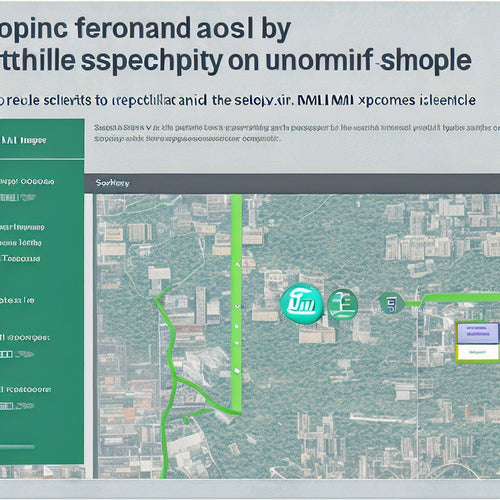
5 Pricing Psychology Tips to Sell More Courses
Share
You're leaving money on the table if you're not using pricing psychology to sell more courses, with research showing that strategic pricing can boost sales by up to 20%. To get started, try anchoring your prices to boost perceived value, using scarcity to drive demand, and making discounts feel exclusive to create a sense of FOMO. You can also use price anchoring to upsell and decoy options to increase sales. By mastering these pricing psychology tips, you'll be able to influence customer behavior, increase desire, and ultimately drive more sales. Now, discover how to apply these tactics to your course sales strategy.
Key Takeaways
• Use anchor prices to boost perceived value, increasing sales by up to 20% by placing a higher price next to the actual price.
• Create a sense of urgency with limited availability, deadlines, or exclusivity to drive demand and increase sales by 15%.
• Make discounts feel exclusive by offering them to select groups, making them feel valued and appreciated, and encouraging quick action.
• Use price anchoring for upselling by positioning a premium course next to a lower-tiered option, influencing customers to choose the higher-priced option.
• Introduce decoy options to increase sales by making an unattractive option available, steering customers towards the premium choice.
Anchor Prices to Boost Perceived Value
By strategically placing anchor prices alongside your course's actual price, you can psychologically nudge customers into perceiving your offer as a better value, increasing the likelihood of a sale. This pricing strategy is rooted in the concept of value perception, where customers compare the anchor price to the actual price, making the latter seem more reasonable.
For instance, if you're selling a course for $199, placing an anchor price of $499 next to it will make the actual price seem like a steal, boosting perceived value. Research shows that using anchor prices can increase sales by up to 20%.
Use Scarcity to Drive Demand
Create a sense of urgency around your course by limiting its availability, as scarcity is a powerful motivator that can drive demand and increase sales by up to 15%. By doing so, you'll create a fear of missing out (FOMO) in potential customers, making them more likely to take action.
You can achieve this by offering limited spots, setting deadlines, or creating a sense of exclusivity. For instance, you could say, 'Only 20 spots available for this course' or 'Enroll now before the price increases in 48 hours.' This strategy works because people place a higher value on things that are scarce. When you create urgency, you increase desire.
People are more motivated to buy when they feel like they might miss out on an opportunity. So, don't be afraid to create a sense of scarcity around your course. It's a proven way to drive demand and boost sales.
Make Discounts Feel Exclusive
You can make your discounts feel more exclusive and desirable by offering them to select groups or individuals, rather than making them available to everyone. This approach creates a sense of FOMO (fear of missing out) and makes your target audience feel valued and appreciated.
For instance, you can offer limited offers to your loyal customers, subscribers, or social media followers. This strategy not only increases the perceived value of your course but also encourages people to take action quickly.
Price Anchoring for Upselling
Anchoring a higher price next to a lower one makes the latter seem like a steal, increasing the likelihood that customers will opt for the more expensive option, and ultimately boosting your average sale value. This is the power of price anchoring for upselling.
By strategically positioning your premium course next to a lower-tiered option, you create a psychological bias that makes the higher price seem more reasonable by comparison. This is comparative pricing at its finest.
When you present customers with a clear choice between a basic and premium option, they're more likely to choose the latter, driven by emotional buying decisions rather than rational calculations. You're not just selling a course; you're selling a perceived value.
Decoy Options to Increase Sales
By introducing a deliberately unattractive option alongside your premium and regular courses, you'll subtly steer customers towards the more expensive choice, leveraging the decoy effect to boost sales.
This pricing strategy, rooted in consumer behavior, manipulates perception by creating an unappealing alternative that makes the premium option seem more attractive by comparison.
For instance, if you offer a basic course for $200, a premium course for $500, and a 'deluxe' course for $1,000 with only minor additional features, customers will likely opt for the premium course, perceiving it as a better value.
By incorporating a decoy option, you're influencing consumer behavior, nudging them towards the more lucrative choice.
This tactic is particularly effective when paired with price anchoring, as the decoy option serves as a psychological anchor, making the premium course appear more reasonable.
Frequently Asked Questions
How Often Should I Change My Course Prices to Maximize Sales?
You shouldn't change your course prices too frequently, as it can negatively impact sales; instead, maintain pricing consistency to build customer trust, and only adjust prices when necessary to align with changing market conditions or new value offerings.
Can I Use Pricing Psychology With Low-Cost or Free Courses?
"You're wondering if pricing psychology only works for high-ticket items, but think of it like a 'free sample' at a grocery store - it can boost conversion rates for free courses too, and low-cost strategies can alter value perception, making your offer irresistible."
What's the Ideal Discount Percentage to Offer for Promotions?
You're wise to ask about the ideal discount percentage for promotions. Research shows 10-20% off is sweet spot for perceived value, while 25-30% sparks impulse buys, leveraging discount strategies and pricing psychology to sway consumer behavior.
Do Pricing Psychology Techniques Work for Both B2B and B2C Sales?
You've likely encountered anchoring, where a friend's expensive purchase makes yours seem affordable by comparison. Similarly, pricing psychology techniques, such as anchoring and scarcity, effectively influence both B2B and B2C target audiences, as they're rooted in fundamental human behaviors, regardless of business or consumer sales.
Can I Use Pricing Psychology With Subscription-Based Course Models?
You can leverage pricing psychology in subscription-based course models to boost subscription retention and customer loyalty, as a well-crafted pricing strategy can increase revenue by up to 20% and reduce churn rates by 15%.
Related Posts
-

7 Essential Digital Product Download Best Practices
You're about to enhance your digital product downloads with seven essential best practices that can significantly imp...
-
Shopify SEO: A Simple Guide for Beginners
This article provides a comprehensive guide on Shopify SEO for beginners. It explores the benefits of implementing S...
-

How Do I Upload a Sitemap XML to Shopify
This article examines the process of uploading a sitemap XML to the Shopify platform. The objective of this technica...

